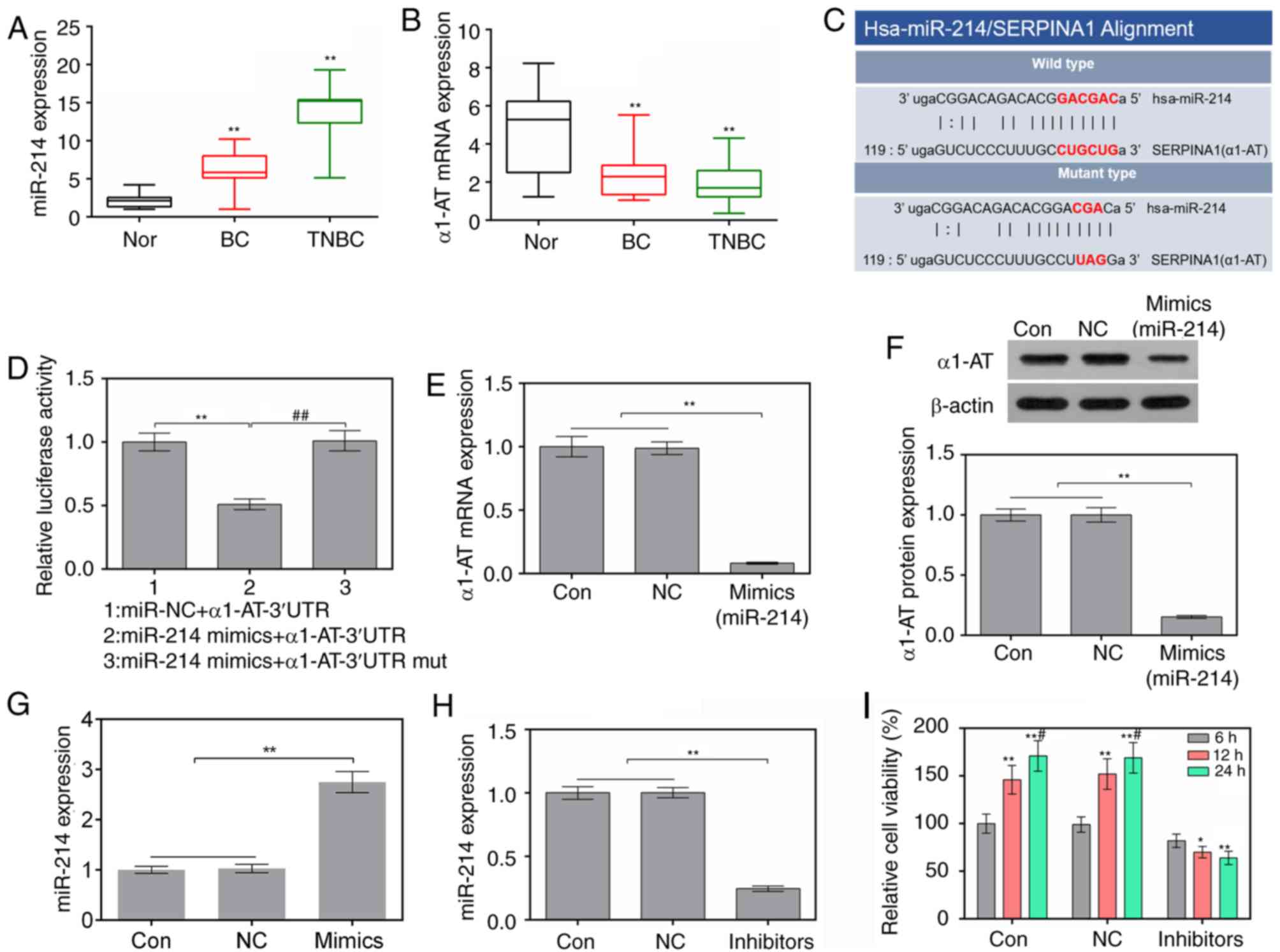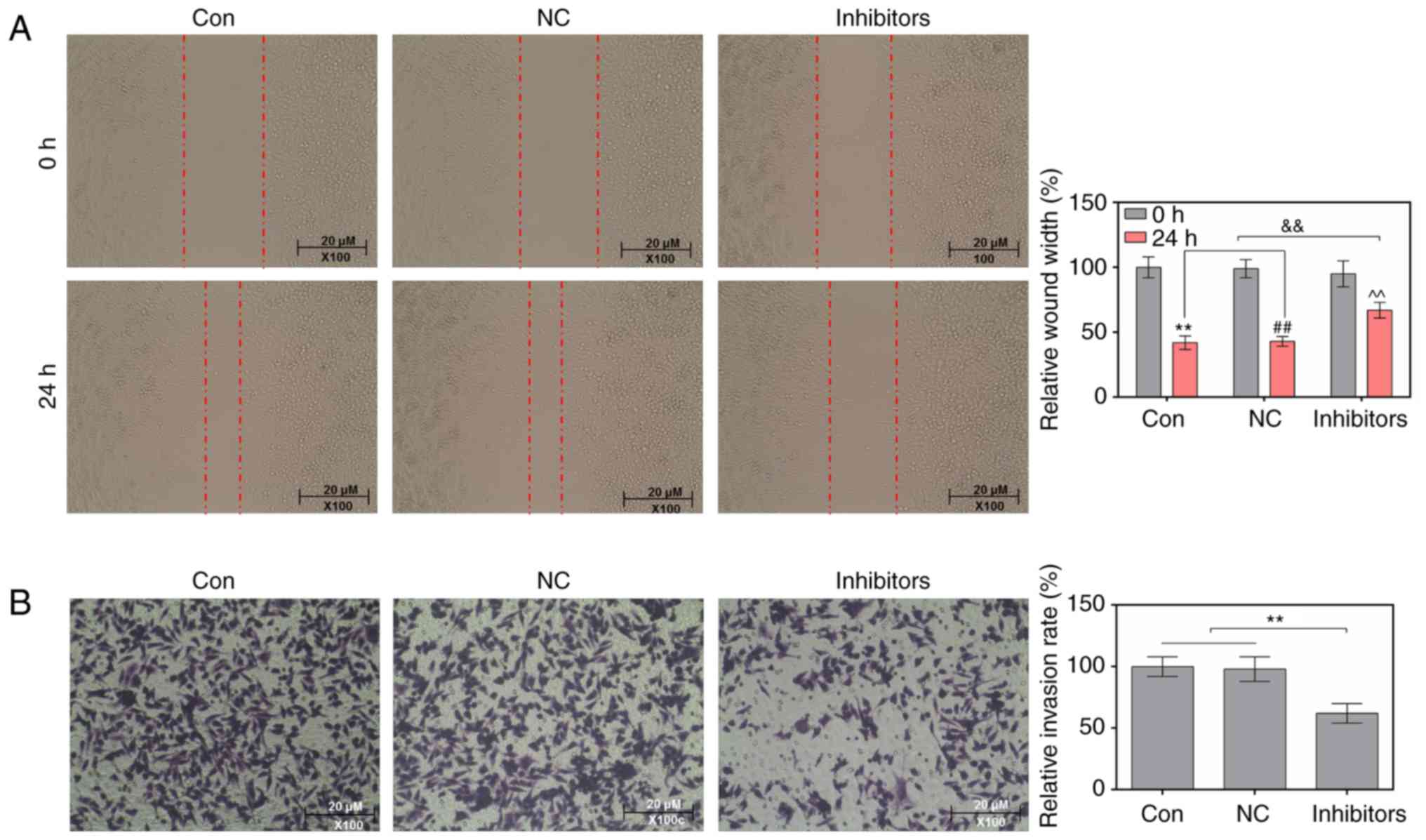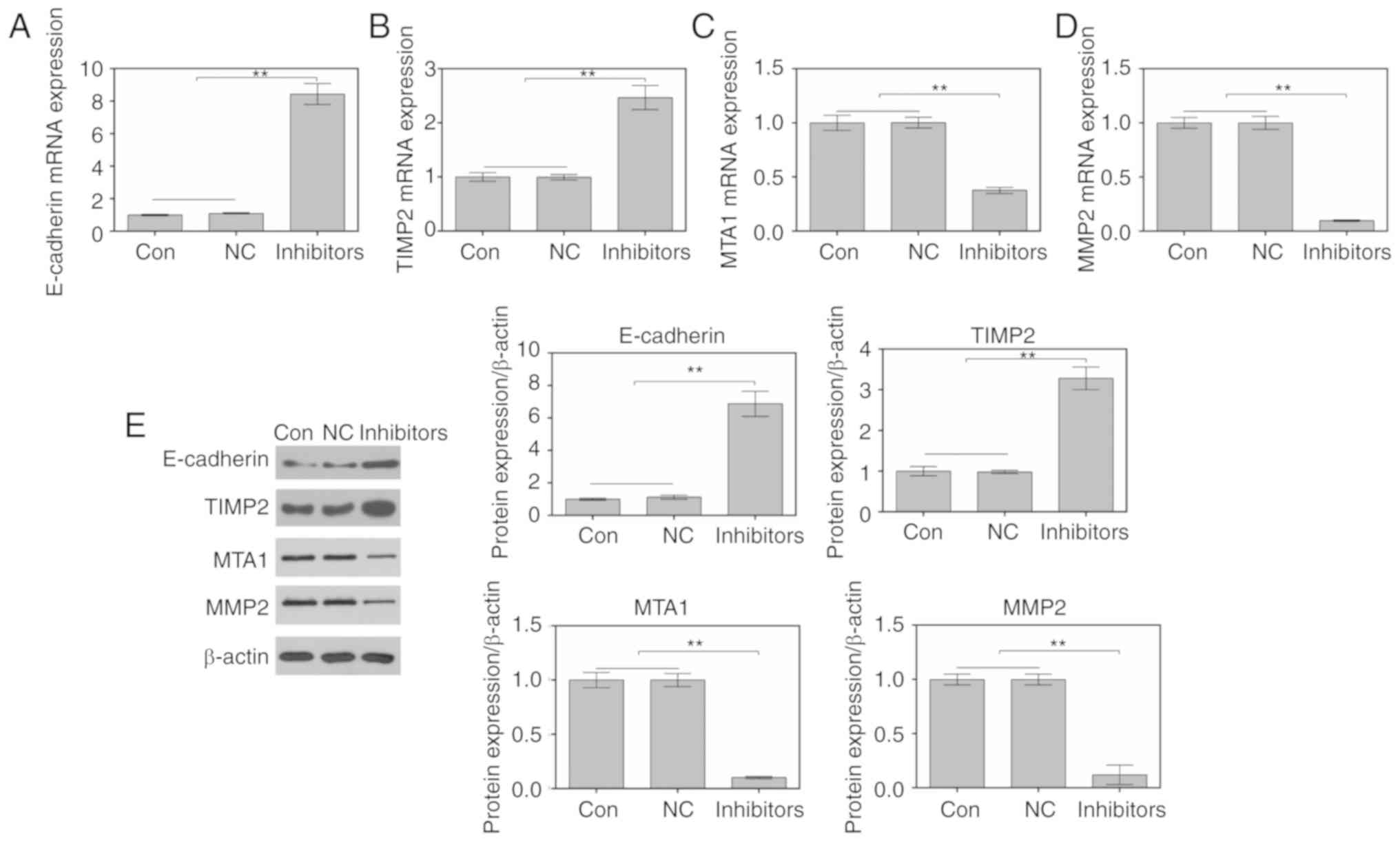|
1
|
Wu J, Goyal L, Nipp R, Wo J, Qadan M and
Uppot RN: The Tipping Point: Key oncologic imaging findings
resulting in critical changes in the management of malignant tumors
of the gastrointestinal tract. Curr Probl Diagn Radiol. 48:61–74.
2019. View Article : Google Scholar : PubMed/NCBI
|
|
2
|
DeSantis C, Ma J, Bryan L and Jemal A:
Breast cancer statistics, 2013. CA Cancer J Clin. 64:52–62. 2014.
View Article : Google Scholar : PubMed/NCBI
|
|
3
|
Dunne M, Dou YN, Drake DM, Spence T,
Gontijo SML, Wells PG and Allen C: Hyperthermia-mediated drug
delivery induces biological effects at the tumor and molecular
levels that improve cisplatin efficacy in triple negative breast
cancer. J Control Release. 282:35–45. 2018. View Article : Google Scholar : PubMed/NCBI
|
|
4
|
Park IH, Kong SY, Kwon Y, Kim MK, Sim SH,
Joo J and Lee KS: Phase I/II clinical trial of everolimus combined
with gemcitabine/cisplatin for metastatic triple-negative breast
cancer. J Cancer. 9:1145–1151. 2018. View Article : Google Scholar : PubMed/NCBI
|
|
5
|
Zenzola V, Cabezas-Quintario MA, Arguelles
M, Perez-Fernandez E, Izarzugaza Y, Correa A and Garcia-Foncillas
J: Prognostic value of Ki-67 according to age in patients with
triple-negative breast cancer. Clin Transl Oncol. 20:1448–1454.
2018. View Article : Google Scholar : PubMed/NCBI
|
|
6
|
Farah M, Nagarajan P, Torres-Cabala CA,
Curry JL, Amaria RN, Wargo J, Tawbi H, Ivan D, Prieto VG, Tetzlaff
MT and Aung PP: Metastatic melanoma with balloon/histiocytoid
cytomorphology after treatment with immunotherapy: A histologic
mimic and diagnostic pitfall. J Cutan Pathol. 45:545–549. 2018.
View Article : Google Scholar : PubMed/NCBI
|
|
7
|
Hejduk B, Bobek-Billewicz B, Rutkowski T,
Hebda A, Zawadzka A and Jurkowski MK: Application of Intravoxel
Incoherent Motion (IVIM) model for differentiation between
metastatic and non-metastatic head and neck lymph nodes. Pol J
Radiol. 82:506–510. 2017. View Article : Google Scholar : PubMed/NCBI
|
|
8
|
Ma J, Yang Y, Huo D, Wang Z, Zhai X, Chen
J, Sun H, An W, Jie J and Yang P: LincRNA-RoR/miR-145 promote
invasion and metastasis in Triple-negative breast cancer via
targeting MUC1. Biochem Biophys Res Commun. 500:614–620. 2018.
View Article : Google Scholar : PubMed/NCBI
|
|
9
|
Kumar MS, Lu J, Mercer KL, Golub TR and
Jacks T: Impaired microRNA processing enhances cellular
transformation and tumorigenesis. Nat Genet. 39:673–677. 2007.
View Article : Google Scholar : PubMed/NCBI
|
|
10
|
Abdellatif M: Differential expression of
microRNAs in different disease states. Circ Res. 110:638–650. 2012.
View Article : Google Scholar : PubMed/NCBI
|
|
11
|
Pillai RS: MicroRNA function: Multiple
mechanisms for a tiny RNA? RNA. 11:1753–1761. 2005. View Article : Google Scholar : PubMed/NCBI
|
|
12
|
Guo Y, Jiang Y, Sang M and Xu C:
Down-regulation of miR-373 increases the radiosensitivity of lung
cancer cells by targeting TIMP2. Int J Biochem Cell Biol.
99:203–210. 2018. View Article : Google Scholar : PubMed/NCBI
|
|
13
|
Li X, Zhao Z, Li M, Liu M, Bahena A, Zhang
Y, Zhang Y, Nambiar C and Liu G: Sulforaphane promotes apoptosis,
and inhibits proliferation and self-renewal of nasopharyngeal
cancer cells by targeting STAT signal through miRNA-124-3p. Biomed
Pharmacother. 103:473–481. 2018. View Article : Google Scholar : PubMed/NCBI
|
|
14
|
Liu X, He B, Xu T, Pan Y, Hu X, Chen X and
Wang S: MiR-490-3p functions as a tumor suppressor by inhibiting
oncogene VDAC1 expression in colorectal cancer. J Cancer.
9:1218–1230. 2018. View Article : Google Scholar : PubMed/NCBI
|
|
15
|
Polakovicova I, Jerez S, Wichmann IA,
Sandoval-Borquez A, Carrasco-Veliz N and Corvalan AH: Role of
microRNAs and exosomes in helicobacter pylori and epstein-barr
virus associated gastric cancers. Front Microbiol. 9:6362018.
View Article : Google Scholar : PubMed/NCBI
|
|
16
|
Shan X, Zhang H, Zhang L, Zhou X, Wang T,
Zhang J, Shu Y, Zhu W, Wen W and Liu P: Identification of four
plasma microRNAs as potential biomarkers in the diagnosis of male
lung squamous cell carcinoma patients in China Med 7. 2370–2381.
2018.PubMed/NCBI
|
|
17
|
Wang Y, Bao W, Liu Y, Wang S, Xu S, Li X,
Li Y and Wu S: miR-98-5p contributes to cisplatin resistance in
epithelial ovarian cancer by suppressing miR-152 biogenesis via
targeting Dicer1. Cell Death Dis. 9:4472018. View Article : Google Scholar : PubMed/NCBI
|
|
18
|
Zhang T, Liu W, Meng W, Zhao H, Yang Q, Gu
SJ, Xiao CC, Jia CC and Fu BS: Downregulation of miR-542-3p
promotes cancer metastasis through activating TGF-β/Smad signaling
in hepatocellular carcinoma. Onco Targets Ther. 11:1929–1939. 2018.
View Article : Google Scholar : PubMed/NCBI
|
|
19
|
Hu JL, He GY, Lan XL, Zeng ZC, Guan J,
Ding Y, Qian XL, Liao WT, Ding YQ and Liang L: Inhibition of
ATG12-mediated autophagy by miR-214 enhances radiosensitivity in
colorectal cancer. Oncogenesis. 7:162018. View Article : Google Scholar : PubMed/NCBI
|
|
20
|
Kalniete D, Nakazawa-Miklasevica M,
Strumfa I, Abolins A, Irmejs A, Gardovskis J and Miklasevics E:
High expression of miR-214 is associated with a worse
disease-specific survival of the triple-negative breast cancer
patients. Hered Cancer Clin Pract. 13:72015. View Article : Google Scholar : PubMed/NCBI
|
|
21
|
Liu Y, Lin J, Zhai S, Sun C, Xu C, Zhou H
and Liu H: MicroRNA-214 suppresses ovarian cancer by targeting
β-Catenin. Cell Physiol Biochem. 45:1654–1662. 2018. View Article : Google Scholar : PubMed/NCBI
|
|
22
|
Wang X, Zhang H, Bai M, Ning T, Ge S, Deng
T, Liu R, Zhang L, Ying G and Ba Y: Exosomes serve as nanoparticles
to deliver anti-miR-214 to reverse chemoresistance to cisplatin in
gastric cancer. Mol Ther. 26:774–783. 2018. View Article : Google Scholar : PubMed/NCBI
|
|
23
|
Chen X, Wang YW, Zhu WJ, Li Y, Liu L, Yin
G and Gao P: A four-microRNA signature predicts lymph node
metastasis and prognosis in breast cancer. Hum Pathol. 76:122–132.
2018. View Article : Google Scholar : PubMed/NCBI
|
|
24
|
Li HL, Liang S, Cui JH and Han GY:
Targeting of GSK-3β by miR-214 to facilitate gastric cancer cell
proliferation and decrease of cell apoptosis. Eur Rev Med Pharmacol
Sci. 22:127–134. 2018.PubMed/NCBI
|
|
25
|
Liu J, Chen W, Zhang H, Liu T and Zhao L:
miR-214 targets the PTEN-mediated PI3K/Akt signaling pathway and
regulates cell proliferation and apoptosis in ovarian cancer. Oncol
Lett. 14:5711–5718. 2017.PubMed/NCBI
|
|
26
|
Costa RLB, Han HS and Gradishar WJ:
Targeting the PI3K/AKT/mTOR pathway in triple-negative breast
cancer: A review. Breast Cancer Res Treat. 169:397–406. 2018.
View Article : Google Scholar : PubMed/NCBI
|
|
27
|
Ramakrishnan V and Kumar S: PI3K/AKT/mTOR
pathway in multiple myeloma: From basic biology to clinical
promise. Leuk Lymphoma. 1-11:2018.
|
|
28
|
Simioni C, Martelli AM, Zauli G, Vitale M,
McCubrey JA, Capitani S and Neri LM: Targeting the
phosphatidylinositol 3-kinase/Akt/mechanistic target of rapamycin
signaling pathway in B-lineage acute lymphoblastic leukemia: An
update. J Cell Physiol. 233:6440–6454. 2018. View Article : Google Scholar : PubMed/NCBI
|
|
29
|
Du L, Li X, Zhen L, Chen W, Mu L, Zhang Y
and Song A: Everolimus inhibits breast cancer cell growth through
PI3K/AKT/mTOR signaling pathway. Mol Med Rep. 17:7163–7169.
2018.PubMed/NCBI
|
|
30
|
Yeh YH, Hsiao HF, Yeh YC, Chen TW and Li
TK: Inflammatory interferon activates HIF-1α-mediated
epithelial-to-mesenchymal transition via PI3K/AKT/mTOR pathway. J
Exp Clin Cancer Res. 37:702018. View Article : Google Scholar : PubMed/NCBI
|
|
31
|
Zhang H, Xu HL, Wang YC, Lu ZY, Yu XF and
Sui DY: 20(S)-Protopanaxadiol-induced apoptosis in MCF-7 breast
cancer cell line through the inhibition of PI3K/AKT/mTOR signaling
pathway. Int J Mol Sci. 19(pii): E10532018. View Article : Google Scholar : PubMed/NCBI
|
|
32
|
Livak KJ and Schmittgen TD: Analysis of
relative gene expression data using real-time quantitative PCR and
the 2(-Delta Delta C(T)) method. Method. 25:402–408. 2001.
View Article : Google Scholar
|
|
33
|
Fan Y, Qian X and Zhang C: U/G SNP
rs111904020 in 3′UTR of STAT3 regulated by miR-214 promotes
hepatocellular carcinoma development in Chinese population. Tumour
Biol. 37:14629–14635. 2016. View Article : Google Scholar : PubMed/NCBI
|
|
34
|
Kuninty PR, Bojmar L, Tjomsland V, Larsson
M, Storm G, Ostman A, Sandstrom P and Prakash J: MicroRNA-199a and
−214 as potential therapeutic targets in pancreatic stellate cells
in pancreatic tumor. Oncotarget. 7:16396–16408. 2016. View Article : Google Scholar : PubMed/NCBI
|
|
35
|
El-Akawi ZJ, Al-Hindawi FK and Bashir NA:
Alpha-1 antitrypsin (alpha1-AT) plasma levels in lung, prostate and
breast cancer patients. Neuro Endocrinol Lett. 29:482–484.
2008.PubMed/NCBI
|
|
36
|
Hamrita B, Chahed K, Trimeche M, Guillier
CL, Hammann P, Chaieb A, Korbi S and Chouchane L: Proteomics-based
identification of alpha1-antitrypsin and haptoglobin precursors as
novel serum markers in infiltrating ductal breast carcinomas. Clin
Chim Acta. 404:111–118. 2009. View Article : Google Scholar : PubMed/NCBI
|
|
37
|
García-Orad A, Arizti P, Durán L, Urcelay
B and De Pancorbo MM: Alpha-1-antitrypsin phenotypes among breast
cancer patients in the basque population. Hum Hered. 44:203–208.
1994. View Article : Google Scholar : PubMed/NCBI
|
|
38
|
Lópezárias E, Aguilarlemarroy A, Felipe
JL, Morganvillela G, Mariscalramírez I, Martínezvelázquez M,
Alvarez AH, Gutiérrezortega A and Hernándezgutiérrez R: Alpha
1-antitrypsin: A novel tumor-associated antigen identified in
patients with early-stage breast cancer. Electrophoresis.
33:2130–2137. 2012. View Article : Google Scholar : PubMed/NCBI
|
|
39
|
Wang F, Lv P, Liu X, Zhu M and Qiu X:
microRNA-214 enhances the invasion ability of breast cancer cells
by targeting p53. Int J Mol Med. 35:1395–1402. 2015. View Article : Google Scholar : PubMed/NCBI
|
|
40
|
Zhang ZC, Li YY, Wang HY, Fu S, Wang XP,
Zeng MS, Zeng YX and Shao JY: Knockdown of miR-214 promotes
apoptosis and inhibits cell proliferation in nasopharyngeal
carcinoma. PLoS One. 9:e861492014. View Article : Google Scholar : PubMed/NCBI
|
|
41
|
Xin R, Bai F, Feng Y, Jiu M, Liu X, Bai F,
Nie Y and Fan D: MicroRNA-214 promotes peritoneal metastasis
through regulating PTEN negatively in gastric cancer. Clin Res
Hepatol Gastroenterol. 40:748–754. 2016. View Article : Google Scholar : PubMed/NCBI
|
|
42
|
Pieters T and van Roy F: Role of cell-cell
adhesion complexes in embryonic stem cell biology. J Cell Sci.
127:2603–2613. 2014. View Article : Google Scholar : PubMed/NCBI
|
|
43
|
Che F, Xie X, Wang L, Su Q, Jia F, Ye Y,
Zang L, Wang J, Li H, Quan Y, et al: B7-H6 expression is induced by
lipopolysaccharide and facilitates cancer invasion and metastasis
in human gliomas. Int Immunopharmacol. 59:318–327. 2018. View Article : Google Scholar : PubMed/NCBI
|
|
44
|
Aravindan S, Natarajan M, Herman TS and
Aravindan N: Radiation-induced TNFalpha cross signaling-dependent
nuclear import of NFκB favors metastasis in neuroblastoma. Clin Exp
Metastasis. 30:807–817. 2013. View Article : Google Scholar : PubMed/NCBI
|
|
45
|
Li G, Li QS, Li WB, Wei J, Chang WK, Chen
Z, Qiao HY, Jia YW, Tian JH and Liang BS: miRNA targeted signaling
pathway in the early stage of denervated fast and slow muscle
atrophy. Neural Regen Res. 11:1293–1303. 2016. View Article : Google Scholar : PubMed/NCBI
|
|
46
|
Zhao C, Sun W, Zhang P, Ling S, Li Y, Zhao
D, Peng J, Wang A, Li Q, Song J, et al: miR-214 promotes
osteoclastogenesis by targeting Pten/PI3k/Akt pathway. RNA Biol.
12:343–353. 2015. View Article : Google Scholar : PubMed/NCBI
|













